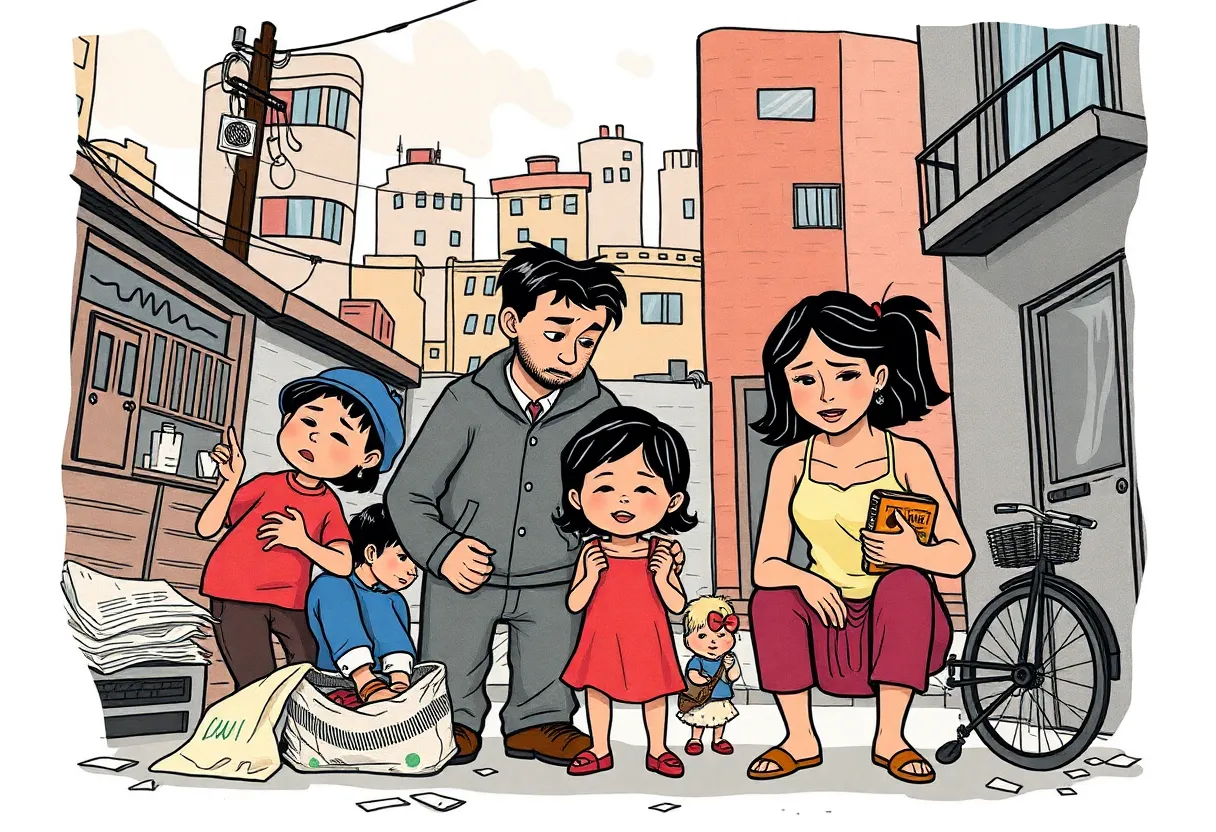News Summary
Cuyahoga County is experiencing significant financial challenges as low-income households struggle with rising costs and federal policy shifts. Families earning less than $16,000 are particularly impacted, with more than 40% of their income spent on necessities. Recent policy changes have added complications, leaving many families reliant on credit cards and social services. A lack of federal guidance amid a government shutdown has also further strained vital programs that support these households.
Cleveland, Ohio – Cuyahoga County is grappling with significant financial strain as low-income households face rising costs paired with new federal policy uncertainties. In 2023, those earning less than $16,000 are spending about twice as much of their income on essential expenses such as utilities, healthcare, and groceries compared to families earning over $265,000.
A recent study highlights that lower-income families are particularly vulnerable; more households earning less than $25,000 are struggling to cover a sudden $400 emergency expense than in the pre-pandemic period. Many families in Cuyahoga County report having limited cash reserves, with over one-third relying on credit cards for financial relief—a concerning trend that emphasizes ongoing financial challenges.
National statistics reinforce the local difficulties, showing that lower-income families devote a much larger percentage of their income to necessities than their higher-income counterparts. Households with earnings under $16,000 allocated over 40% of their income to housing costs in 2023. Furthermore, over 60% of low-income residents in Cuyahoga reported needing to make at least one trade-off between basic necessities in the last year, which has increased by 30% since before the onset of the pandemic. The common trade-offs include choosing between food and utilities, food and housing, or food and transportation—each facing significant price increases.
The challenges have been compounded by shifts in federal policy, most notably with the passage of the One Big Beautiful Bill Act. This legislation imposed stricter work requirements for adults receiving SNAP (Supplemental Nutrition Assistance Program) or Medicaid, alongside increased paperwork, leading to confusion among both residents and local nonprofits. Additionally, legal refugees will lose access to SNAP by the end of October, exacerbating the hardships they face as they transition into community involvement.
Amid a current government shutdown, vital resources and support for needy individuals have been severely restricted. In Ohio, nearly two-thirds of funding for health and social services comes from federal sources, which heightens concerns about access to essential programs. The lack of clear guidance from federal agencies has further complicated planning for local organizations eager to support struggling families.
Economic policy uncertainty is historically high, with noted periods of heightened worry regarding healthcare and tax policy since 1985. In Ohio, while the minimum wage and benefit levels are annually adjusted for inflation, the latest revisions will be implemented in January 2024—leaving low-income households to contend with rising costs now. Analysts warn that inflation could disproportionately impact these families in the latter half of the year.
The ongoing struggles for economic mobility are painfully evident. Many working families find it extremely challenging to rebound from setbacks such as rent hikes, car repairs, or overdue utility bills. Currently, about half of all households in Cuyahoga County are finding it difficult to meet basic needs, with this financial strain spilling over from urban centers into surrounding suburban areas.
Support mechanisms, such as the United Way’s 211 helpline, play an essential role in providing assistance. This service received upwards of 226,000 requests for help in the past year, predominantly for essential needs like housing and utilities. In addition, the Home Energy Assistance Winter Crisis Program (HEAP) is now open for income-eligible applications. However, providers in Cuyahoga County, including CHN Housing Partners and Step Forward, have reported state funding cuts that limit assistance capabilities. While CHN is focusing its Winter Crisis program on specific zip codes due to these limitations, Step Forward continues to serve the entire county.
To alleviate some financial pressure, the Summer Cooling Program is also being made available for income-eligible residents, aiding with cooling costs from July through September. Various programs, such as the Percentage of Income Payment Plan (PIPP+), aim to assist households in maintaining utility services year-round. Additionally, there are proposals for a one-time utility amnesty program in Cleveland directed at helping customers facing utility debt. Residents are also encouraged to consider alternative energy suppliers, as a significant increase in rates is anticipated.
As Cuyahoga County navigates these complex challenges, the focus remains on addressing the immediate needs of its low-income residents while advocating for policies that provide long-term stability and support.
Deeper Dive: News & Info About This Topic
HERE Resources
East Cleveland Faces Financial Crisis Amid Receivership Proposal
Additional Resources
- Crisis Boosts Northeast Ohio Economy – Crain’s Cleveland
- Wikipedia: Economic Mobility
- Declining Economic Forces Hit Ohio Families Hard – Crain’s Cleveland
- Google Search: Utility Assistance Programs Ohio
- Utility Assistance Program – News 5 Cleveland
- Google Scholar: Financial Challenges Low-Income Families
- Ohio’s HEAP Winter Crisis Program – Cleveland 19
- Encyclopedia Britannica: Supplemental Nutrition Assistance Program

Author: STAFF HERE CLEVELAND WRITER
The CLEVELAND STAFF WRITER represents the seasoned team at HERECleveland.com, your premier source for actionable local news and information in Cleveland, Cuyahoga County, and beyond, delivering "news you can use" with in-depth coverage of product reviews for personal and business needs, local business directories, politics, real estate trends, neighborhood insights, and state news impacting the region—backed by years of expert reporting and robust community input, including local press releases and business updates, while providing top reporting on high-profile events like the Rock and Roll Hall of Fame inductions, Cleveland International Film Festival, and holiday parades, alongside key organizations such as the Cleveland Clinic, Cleveland Orchestra, and Great Lakes Science Center, plus leading businesses in manufacturing and healthcare like Sherwin-Williams and University Hospitals, and as part of the broader HERE network including HEREDayton.com, offering comprehensive, credible insights into Ohio's vibrant landscape. HERE Cleveland HERE Dayton





